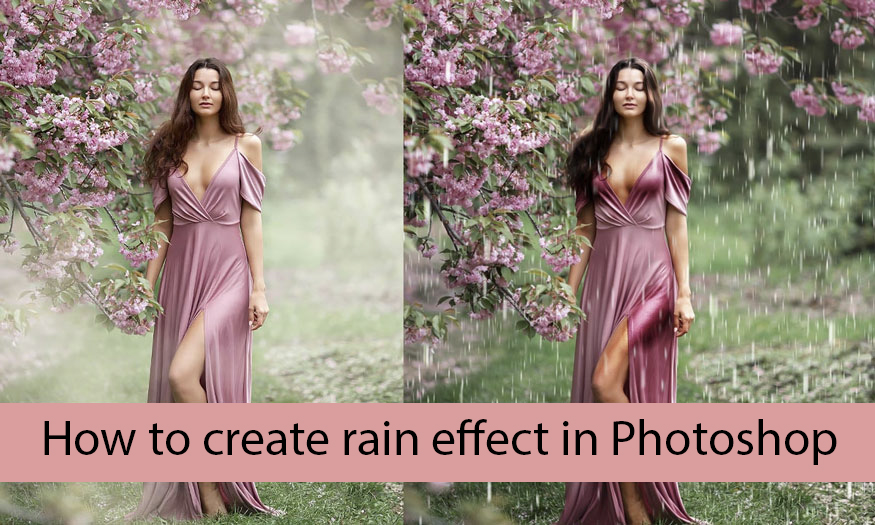Best Selling Products
6 types of camera filters that photographers SHOULD KNOW
Nội dung
- 1. What is a camera filter?
- 2. How to choose the right Filter for your lens
- 3. Which camera filter brand should I choose?
- 4. Camera filter classification
- 4.1. What is UV Filter? What is the function of UV Filter?
- 4.2. What is ND filter? How to use it?
- 4.3. What is CPL filter? How to use it?
- 4.4. What is GND Filter? Is it the same as ND Filter?
- 4.5. What is Macro Filter? Is it good?
- 4.6. What is Filter Star?
Camera filters are used by photographers to create many unique effects for photos. Currently, many types of filters create unique effects. Let's refer to some of the most popular camera filters used today with SaDesign.
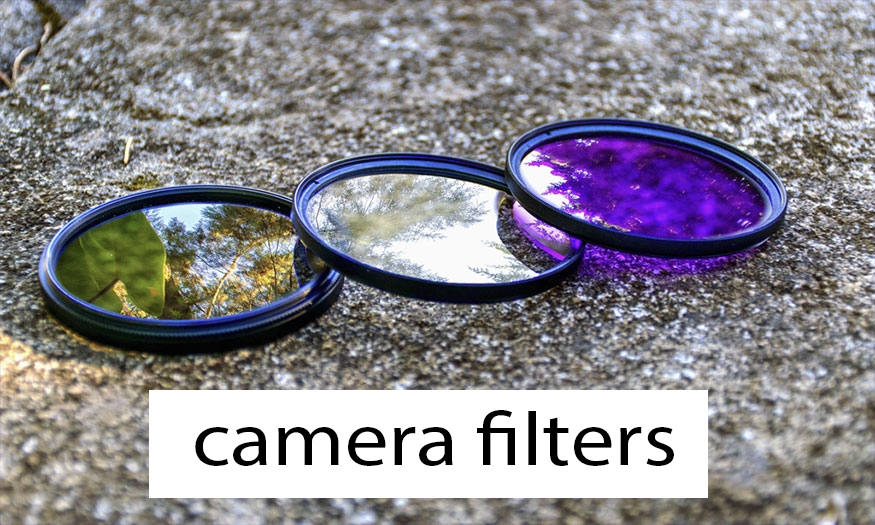
1. What is a camera filter?
Camera filter is also known as filter glass. This is a specialized device that attaches to the camera lens with the purpose of obtaining unique effects or protecting the lens.
Some coatings are applied on top of glass panels, depending on the type of glass and purpose of use, can give effects such as blue sky, warmer tones, reduced glare, etc.
There are many different types of camera filters on the market today. Depending on your desired photo, you will choose the appropriate filter.
2. How to choose the right Filter for your lens
The camera filter market is currently very vibrant with the appearance of many different types of filters. Each line has a different size, so to choose the right filter for your lens, you need to know the filter ring size. Look at the lens specifications to know. You just need to note the number next to the phi Φ symbol, this is the filter size you need to buy.
You can also mount filters larger than the front ring of your lens by using an upgrade ring to make your lens compatible with larger filters.
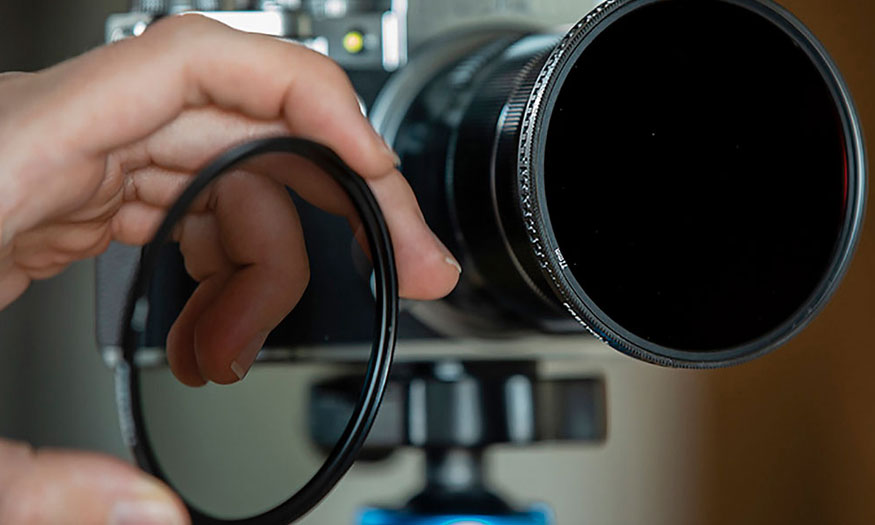
Filter thickness is also important, especially when using a wide-angle lens. There are some ultra-thin camera filters that are designed to reduce black fringing. However, these filters are often quite expensive and do not allow other filters to be attached on top, and do not even work with lens caps.
3. Which camera filter brand should I choose?
There are many brands of camera filters, but not all of them are good. Below are some brands that are highly appreciated and recommended by experts and camera enthusiasts.
If conditions allow, you should choose a genuine B+W Filter. These are often quite expensive, about 2 million for size 77mm.
For a more affordable line, you can choose a Hoya Filter. This is a Japanese brand specializing in manufacturing optical equipment. The price range is wide, ranging from >25$.
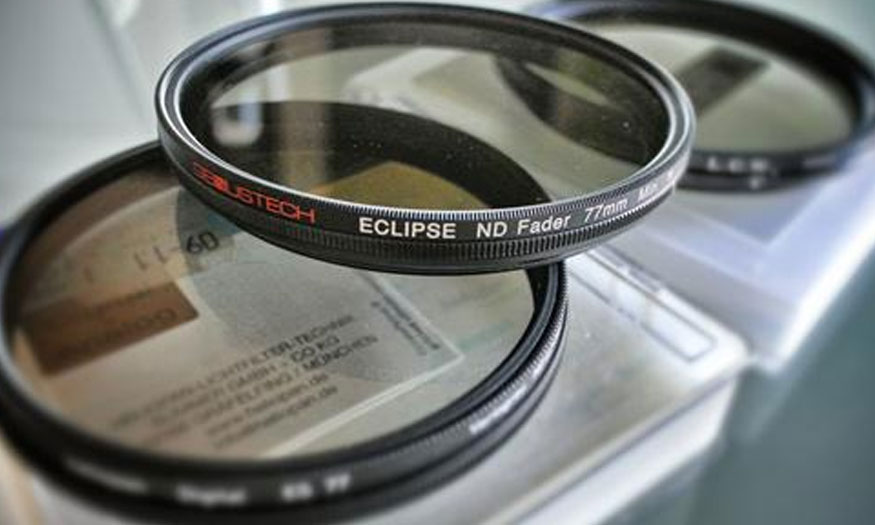
Buy filters at reputable addresses to ensure authenticity, don't buy fake products for just a few tens of thousands. It will not guarantee the effect or the ability to protect the lens.
4. Camera filter classification
There are many types of camera filters available, below are some commonly used filter lines today.
4.1. What is UV Filter? What is the function of UV Filter?
UV filter is the most commonly used camera filter today. This optical filter has the effect of blocking ultraviolet rays from entering the lens, helping to improve image quality, avoiding damage to film, sensor and image.
In addition, this filter also prevents dust from entering the lens, avoiding scratches on the glass surface.
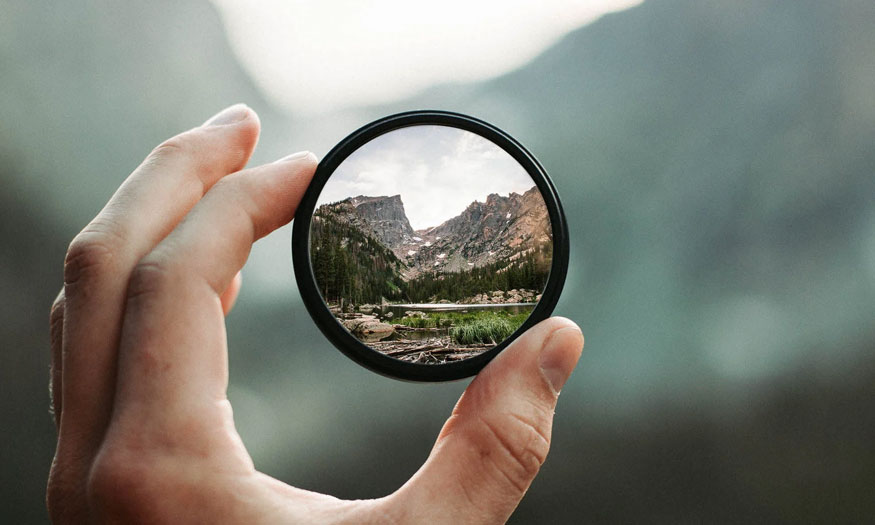
UV filters are considered most effective for film cameras because the film is more susceptible to UV light than the sensor. In fact, many people consider UV filters to be of little use for digital cameras because the sensor is less susceptible.
However, this filter has the limitation of reducing the quality of the image when under strong light sources such as the sun, artificial lights. It will form flashes and shadows on the image, sometimes even creating an illusion of the subject in the corner.
4.2. What is ND filter? How to use it?
ND filter is called Neutral Density in English. This is a specialized optical filter for cameras that reduces the light intensity to the camera sensor, helping us to prolong the shooting time under strong light sources. You can simply understand the ND filter as a pair of sunglasses, allowing the camera to shoot safely in the sun.
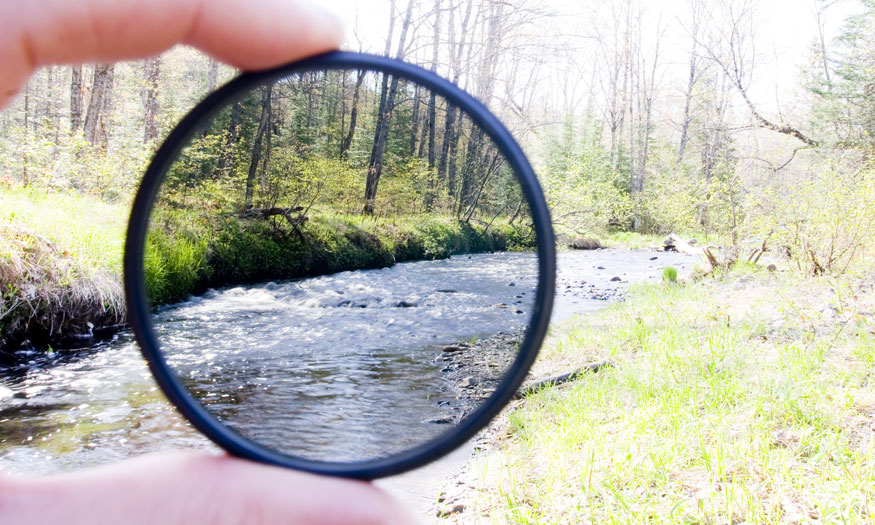
Depending on the type of ND Filter, it can reduce light from 10 to 1000 light intensity. Helps users shoot at very slow speeds even when the sun is still bright. This filter is very suitable for taking pictures of waterfalls, rivers, and floating clouds because it will create a soft motion effect.
4.3. What is CPL filter? How to use it?
CPL stands for Circular Polarizing Filter, which means circular polarizing filter. This is a specialized filter for cameras with the ability to adjust the direction of light passing through the lens, thereby helping to control and eliminate reflected light rays, improving image quality.
This camera filter is very suitable for landscape photography.
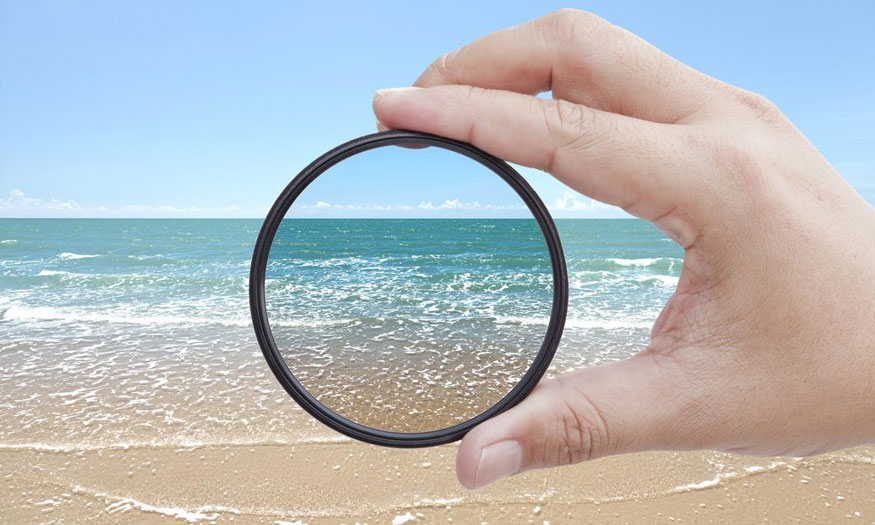
CPL filter can adjust the lightness and darkness of the sky, changing the color tone of the photo according to the photographer's wishes. This filter helps create a shimmering effect for landscape photos, making the photos more unique and impressive.
Note that CPL can reduce the amount of light entering the lens, so you may need to increase your shutter speed or use a higher ISO when using it.
4.4. What is GND Filter? Is it the same as ND Filter?
GND's full name is Gradual Neutral Density, it was created to overcome the limitations of ND filters.
Specifically, the circular ND filter has limitations when taking landscape photos such as the sky is very bright but the foreground is quite dark. This disadvantage is overcome by the square GND Filter with a half-white, half-black texture with a transition area in the middle.
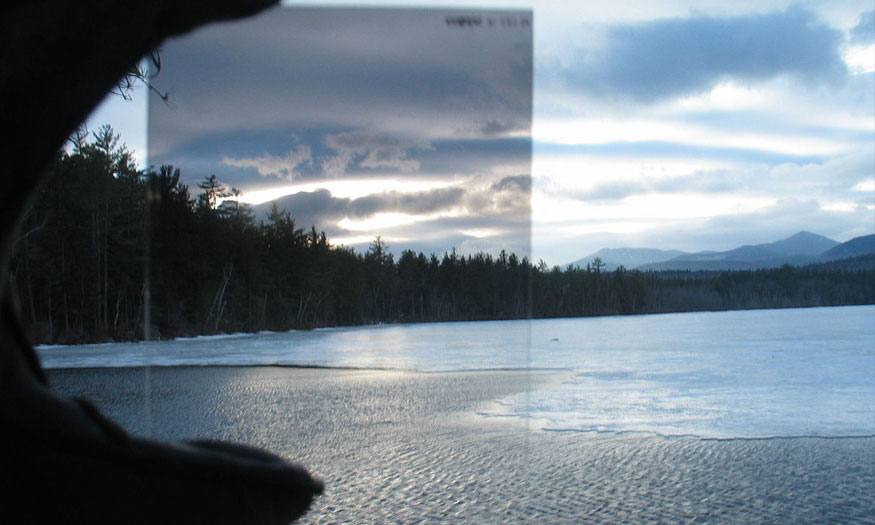
GND filter is different from ND filter in that GND helps reduce light gradually from top to bottom (left to right, depending on how the filter is placed).
GND is divided into 3 types:
Hard-Edge GND: This type has a half gray filter, the other half clear white filter. The two halves are clearly divided to balance high contrast, bright scenes.
Soft Edge GND: This filter gives a smooth transition between the dark and clear areas of the filter.
Reverse GND: it is specialized for taking photos of sunrise and sunset. This filter gradually transitions from dark to darker areas and the bright light will be in the lower half of the foreground.
4.5. What is Macro Filter? Is it good?
Macro Filter is a prime lens that is specially designed to produce extremely sharp images at close range.

You can simply understand it as a magnifying glass when it gives the ability to magnify the subject image. You will get a much larger image than the actual condition of the lens.
In fact, macro lenses are expensive, instead of buying a dedicated lens, you can buy a macro filter.
Depending on the magnification level +1 to +10, the photo will receive the corresponding results. Most Macro filters are of very low quality. The color and contrast when passing through the filter are greatly reduced compared to the original quality of the lens.
If you can afford it, a macro lens is the best. But a macro filter is best for those on a tight budget.
4.6. What is Filter Star?

The camera's Star Filter allows for the creation of incredibly beautiful starry lights.
The Start Filter surface has a cross-cut groove design depending on the number of star blades to create star effects.
Attach this filter to the front of your lens, then rotate the filter to get the desired effect. You can also change to another type with the number of stars to suit your needs.
Above is a summary of some of the most commonly used camera filters today. Depending on your needs, choose the appropriate filter to get the best photo.
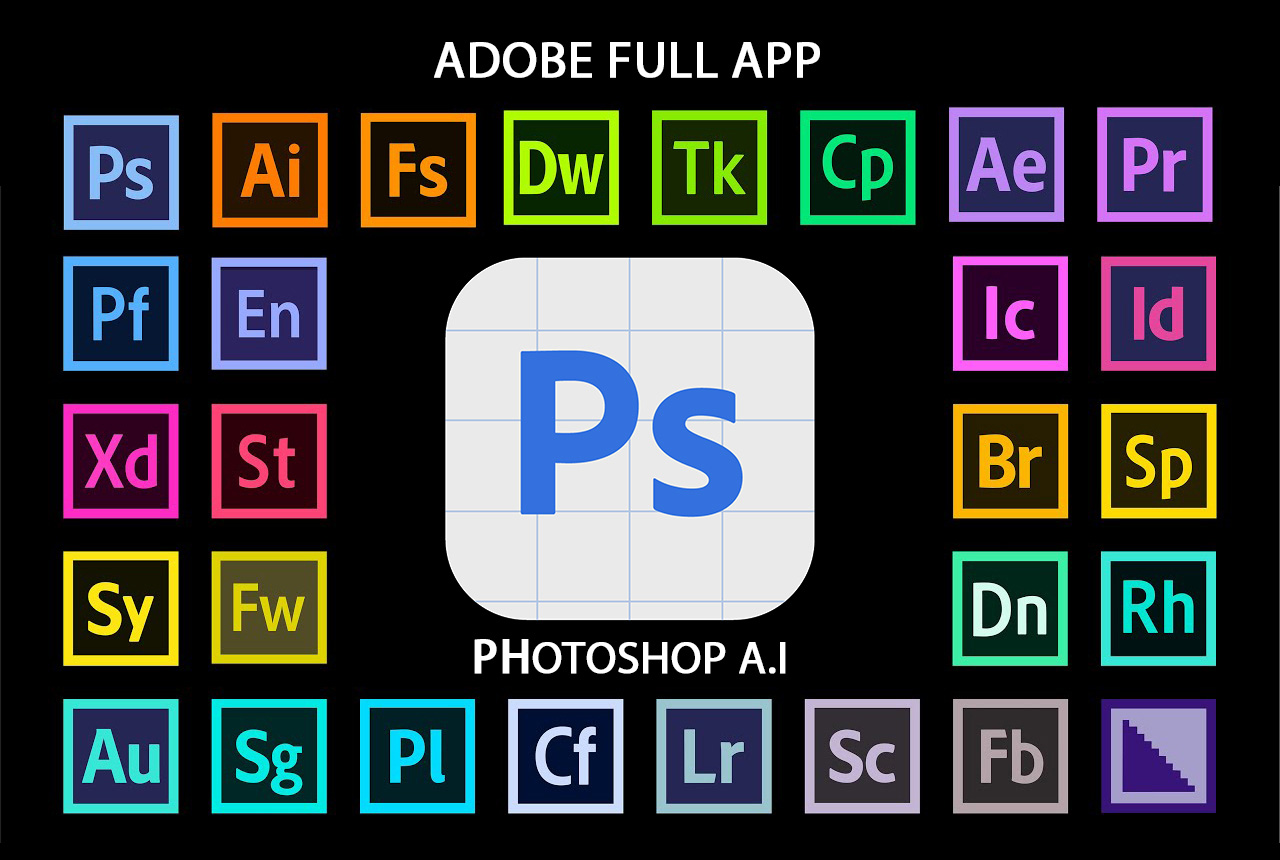
Installation and support contact information:
🏡 SADESIGN Software Company Limited
📨 Email: phamvansa@gmail.com
🌍 Website: https://sadesign.ai















.png)



























